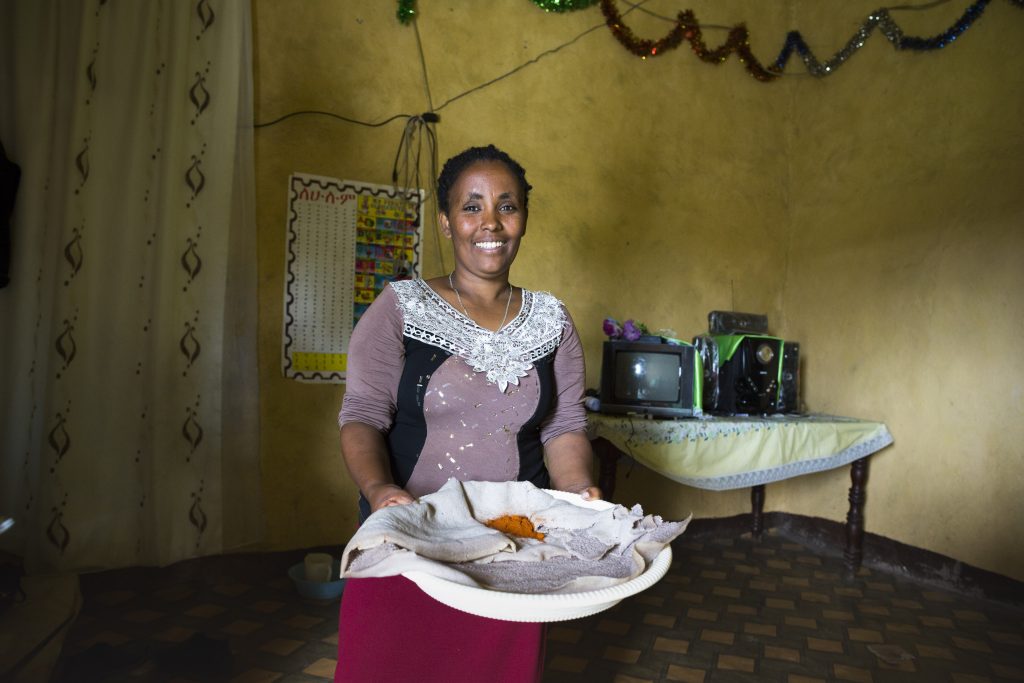by Marieke Meeske and Saskia van Veen

Credits: Petterik Wiggers / Oxfam Novib
Youth in Africa face a myriad of constraints that affect their access to and success in the labour market. The current COVID-19 pandemic, which disproportionally affects young people, puts further pressure on the job market. Youth employment policies and programmes try to tackle these constraints, e.g. by providing training and skills development to youth (supply side) or development of small and medium enterprises (demand side), or a combination of both.
Under the ‘Boosting Decent Employment for Africa’s Youth’ programme, we have worked together with the INCLUDE knowledge platform on two evidence syntheses that combined experiential knowledge from Oxfam, partners, and young activists/ entrepreneurs and technical knowledge from academic sources. The first tries to broaden the view on youth employment programmes by a focus on understanding how empowerment and an enabling environment matter for the effectiveness of African youth employment programmes. The second focuses on how African governments are working towards inclusive growth and the participation of youth herein. In this blog we take you along most important lessons from both syntheses.
Addressing empowerment and the enabling environment to reduce intersectional barriers in youth employment
A successful pursuit of opportunities in the labour market may be limited by intersecting barriers. Therefore, it is important to strengthen youth’s empowerment and remove restrictive social norms, in order for all youth to reach their full potential. Youth employment programmes that consider empowerment and the enabling environment tend to target disadvantaged groups of youth, who are at a greater distance from the labour market than their peers. Despite their focus on marginalized youth, these programmes manage to improve its employment and business outcomes at least to an extent similar to programmes that don’t work on empowerment and the enabling environment. In addition, a focus on empowerment brings positive effects on feelings of autonomy, self-confidence and self-esteem, which generally precede any subsequent labour market or business success. Attention to empowerment and restrictive social norms therefore helps to remove the barriers that prevent disadvantaged youth from entering the labour market in the first place.
Read policy recommendations here.
Inclusive growth in with and for young people in Africa
Inclusive growth is gaining increased attention in policy agenda’s in the African contexts, exemplified by the Sustainable Development Goals (SDGs), which stress the importance of youth employment and decent work. There are several ways in which African governments address (decent) youth employment and inclusive growth. Common approaches include, but are not limited to: national youth policies, value chain and market system development, active labour market policies, and directly employing youth in the public sector. Case studies in Ethiopia, Uganda and Somaliland show that youth (un)employment takes centre stage within higher-level, longer-term and strategic national youth policies. Improving the inclusiveness of the labour market is a common (albeit sometimes implicit) objective of such policies, which are operationalized in more concrete active labour market policies. A comprehensive and complementary package of interventions that simultaneously address demand- and supply-side constraints are most effective. While promoting economic growth, a balance needs to be struck between several trade-offs. For example, job creation in the formal versus informal sector, in urban versus rural areas, and in terms of quantity vs quality of jobs. Meaningful participation of youth in balancing these trade-offs is crucial for economic growth to be inclusive and to create decent jobs for all.
Read policy recommendations here.
Recognizing diversity among youth
As youth comprises of a wide diversity of sub-groups, each facing their own particular barriers, it is not possible to serve young people effectively with a one-size-fits-all-approach. Heterogeneity and intersectional barriers need to be taken into account in the design of employment policies and programmes directed at youth. Only when policies and programmes adequately address the different needs, ambitions and interests of youth when it comes to securing decent work, young people can start taking control over their own future. Meaningful youth participation is essential to enable true understanding of diversity among youth, as well as to bridge the gap between formulation and implementation.
About Authors:
Saskia van Veen is a senior impact measurement & knowledge specialist focused on mixed-methods research, qualitative and participatory research, and learning. She is part of the Learning, Innovation, and Knowledge unit at Oxfam Novib.
Marieke Meeske is an impact measurement and knowledge specialist focused on quantitative research methods. She is part of the Learning, Innovation, and Knowledge unit at Oxfam Novib.